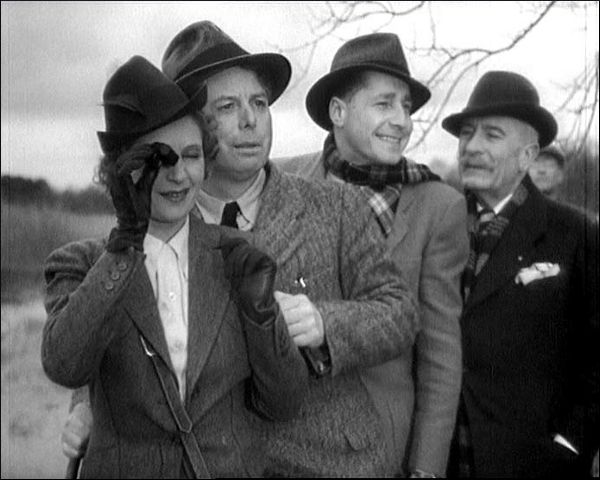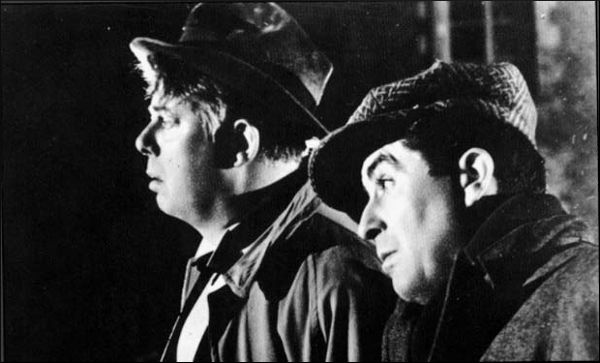Considered by many to be the best film ever made in France, “le film des films” (the film of films) according to famous French director François Truffaut, La règle du jeu (The Rules of the Game) has become an absolute classic despite a largely hostile reception when it was first released in 1939. In fact, during World War II, the original film suffered many cuts and was temporarily lost. The movie, as we now know, is actually a later reconstruction based on surviving footage. Its director, Jean Renoir, son of the impressionist painter Auguste Renoir, is one of France’s most respected image makers, despite the fact that he worked with different tools than his father. His massive and benevolent silhouette also made him popular, and in La règle du jeu, he plays the role of Octave, a bear-like but kind-hearted confidant.
"Considered by many to be the best film ever made in France, La règle du jeu has become an absolute classic despite a largely hostile reception when it was first released in 1939."
La règle du jeu introduces the audience to many multi-faceted characters, all with multiple layers and intricate depth. Under the masks imposed by class and social conventions (the “rules” of the social “game”), are hidden personalities that surface in special circumstances. The movie studies how a person can change his or her attitude depending on their environment and interlocutor, and how everyone, in their own way, plays a game of master and servant. Like the figurines found in the musical boxes of the protagonist, Marquis de la Chesnaye, the movie’s characters are puppets in their own way. Even the least likeable characters in La règle du jeu appear sympathetic at times, and one feels Renoir’s tenderness towards his fellow human beings. Marceau the poacher, played by the great Julien Carrette, is by far the funniest character, quite endearing despite his outlaw activities and his propensity to cheat, lie, and steal others’ wives. His joviality, his frankness, his smile, and his “gouaille” (cockiness) make him irresistible to Lisette, a maid and the wife of the rough gamekeeper Schumacher. She exudes plenty of “gouaille” as well, with her typical Parisian accent. Both of them are attracted to each other and flirt quite openly in front of Schumacher. In one scene, Marceau humorously uses the shoes he is shining as if they were flower petals, claiming, while looking at Lisette, “Elle m’aime un peu, beaucoup, passionnément, à la folie…” (She loves me a little...)

La règle du jeu is clearly divided into acts. The first takes place within the elegant dwellings of Parisian high society, while the second moves into the countryside estate of the Marquis, during a posh hunting party. The plot is based on classic French plays, particularly on Les caprices de Marianne by Alfred de Musset, and Renoir asked his actors to perform like they would in a theatrical commedia dell’arte. He even let them improvise, lending the film a great deal of freshness. This is reinforced by the sound recording, which retains the overlapping dialogue that is so natural of everyday conversation. There is also an impressive use of depth of field, meaning the foreground and the background are both in focus, and this allows the director to show several actions happening at once and adds dynamism to the ensemble.
"With its mixture of lightness and profundity, as well as its multiple layers, the movie has inspired many directors, and not only in France."
As portrayed in the movie, living in society is like performing on a stage where everyone plays a role that is difficult to refuse. The aviator André Jurieux, one of the main characters, learns this at his own expense. He falls in love with a high society woman, named Christine, and lets this be publicly known. Christine herself also has difficulties understanding the rules, as she comes from Austria, where manners and customs are different than in France. André Jurieux reminds her of this when they decide to elope. She insists on leaving secretly while he prefers to inform her husband, arguing, “Mais Christine, tout de même, il y a des règles” (But Christine, really, there are rules!). Elsewhere, the movie cleverly portrays the aristocracy’s slight condescension towards the wealthy “grande bourgeoisie,” who may have money but no title or style.
The film’s successful blend of drama and farce reflects the tragicomic nature of life. Renoir himself considered his movie to be “un drame gai” (a merry drama) or “une fantaisie dramatique” (a dramatic fantasy). With an air of playful energy, La règle du jeu is also a dark and disabused observation of the world. The players who don’t follow the rules are crushed and another game begins with the survivors of the previous one. There are also many allusions to the coming war, which exploded the very year of the film’s premiere. Examples include: the lengthy hunting scene; the army’s rigidity evoked in the figure of the general; and the attitudes of the French socialites towards foreigners like Christine and Jews like Christine’s husband, the Marquis. With its mixture of lightness and profundity, as well as its multiple layers, the movie has inspired many directors, and not only in France. A recent and remarkable example is Gosford Park, by Robert Altman, in which several scenes and plot points are direct references to La règle du jeu. Gosford Park’s screenwriter, Julian Fellowes, would then go on to create the similarly-themed TV drama Downtown Abbey.





